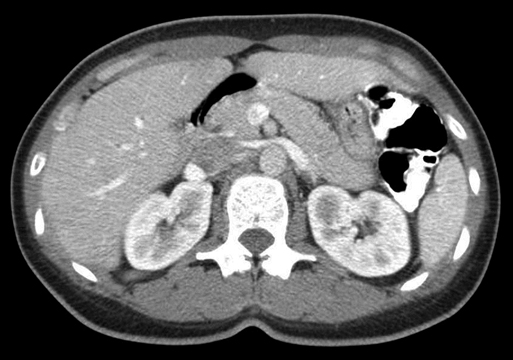The nutcracker syndrome is characterized by entrapment and compression of the left renal vein between the abdominal aorta and the superior mesenteric artery (SMA) (Figure 1). The underlying anatomic anomaly, first described by Gant in 1937, can lead to left renal venous hypertension and variable degrees of hematuria and left flank pain. In women, it may be associated with pelvic congestion symptoms, including pelvic pain, dyspareunia, dysuria, and gluteal, perineal, and labial varices; manifestations in men can include a varicocele. Not all patients with compression identified by noninvasive imaging have symptoms, and among those with trivial symptoms, many can be managed conservatively. However, for those with disabling symptoms, surgical or endovascular treatment can provide substantial relief.
Renal Vein Entrapment
The Nutcracker Syndrome

Stay updated, free articles. Join our Telegram channel

Full access? Get Clinical Tree


